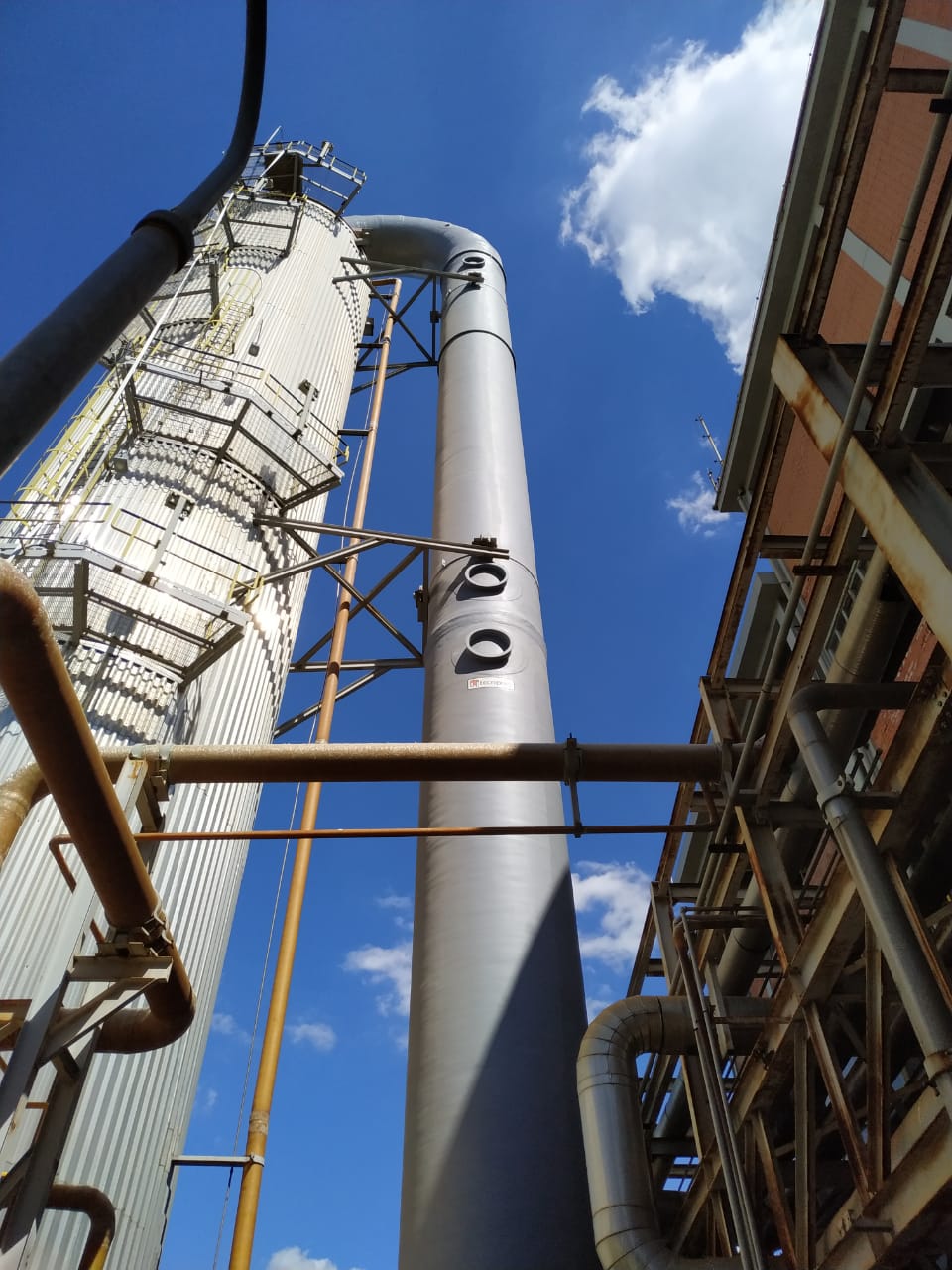
Brazilian composites supplier Tecniplas has manufactured an upflow tower for use in the paper pulp bleaching process.
‘The customer [had] operated this type of equipment for a decade,’ said Luís Gustavo Rossi, director of Tecniplas. ‘However, in the last five years of use, some structural reforms were necessary, due to the high aggressiveness of the environment.’ The tower operates at 70°C and comes into contact with highly corrosive fluids, the company said. It has a diameter of 2,220 mm, and is 42 m in height, with two sections of 21 m each mounted in the field.
Tecniplas' engineering department made structural calculations based on the ASME-RTP1 standard, which covers the corrosion of thermoset composites, and took into account a 144 km/h wind load. According to Rossi, it predicted a corrosion factor of about 1 mm per year over the next few years. The company then considered a lamination of nine 450 g/m² strand mats to make a chemical barrier. The liner, chemical barrier and structure were all produced with Derakane Signia™ 411 ester-vinyl resin, according to Tecniplas.
Due to this new combination of raw materials, the new up flow tower is able to operate for 15 years, without the need for maintenance interruptions, the company said.
This story uses material from Tecniplas, with editorial changes made by Materials Today. The views expressed in this article do not necessarily represent those of Elsevier.





